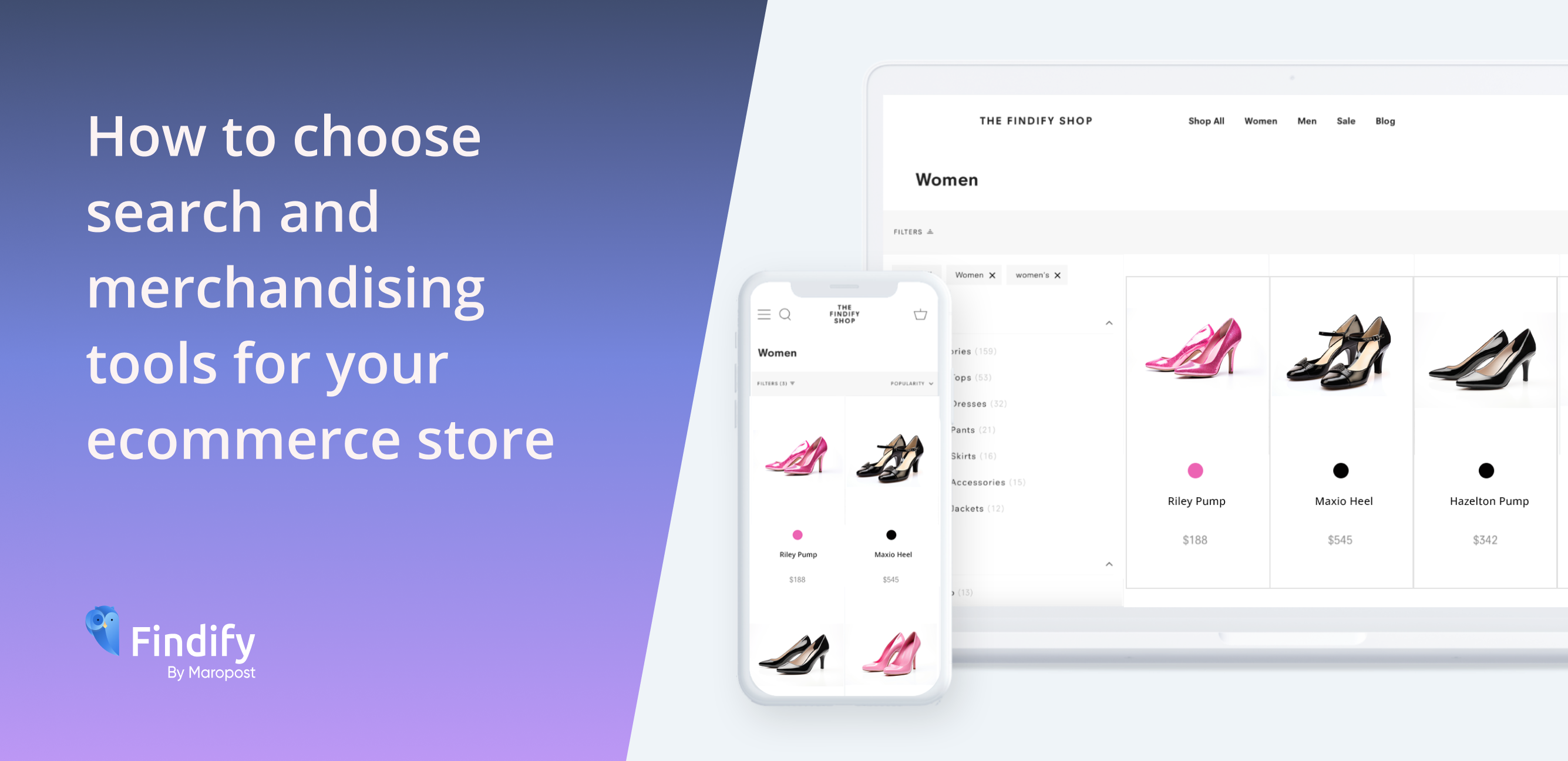The latest iteration of Findify’s Weighted Merchandising capabilities is here! New enhancements ensure harmonized product rankings for ecommerce merchants by seamlessly fusing merchandising rules with aggregated popularity scoring from the relevant time horizon. The latest update also provides merchants with further control over their product grid, enabling the elevated prioritization of strategic outcomes.
In the dynamic landscape of ecommerce, every merchant understands the pivotal role the order of products plays in driving sales. The art lies not just in displaying products, but in orchestrating a compelling sequence that captivates customers and guides them toward their desired purchase.
Naturally, a pressing question emerges: What constitutes the “ideal” product order? As with any creative endeavor, the answer is nuanced and individualistic, varying between merchants, industries, and geographies.
The ideal setup is to mix the power of smart automatization to learn from shopper’s desires, with intricate merchandising rules based on strategic objectives. The challenge is to balance the two perspective”
Enhancements to Weighted Merchandising
To help merchants achieve their ranking goals, the Findify team introduced a brand-new feature – Weighted Merchandising.
This capability enabled merchants (when creating their merchandising rules) to assign weights to any product (or even variant) attribute – which would then influence the order in which the products were shown in either collections or search results.
“This was a feature that merchants asked for directly. We saw the value in giving merchants more control over their product ranking, so that they could push their strategic goals more easily,” explained Findify’s Head of Product, Joakim Amadeus Olsson.
“We built our Weighted Merchandising feature, and it was extremely well received. But we always knew there were a few more next-level tweaks we wanted to roll out, so we have continued to improve it.”
To that end, an enhanced version of Weighted Merchandising has just been released, which achieves two main objectives: To supercharge the baseline performance of how merchandising rules interacts with popularity, and to give merchants control over how important trend scoring is as a factor in determining the order in which products are shown.
Objective 1: Supercharging the Baseline
The improvements to Findify’s Weighted Merchandising capabilities include a new harmonious equilibrium between trend scoring and strategy.
“In the past, we’ve observed instances where an exceptionally popular product defied all merchandising rules, skyrocketing to the top of product grids. While it wasn’t common, it did occur,” said Mr Olsson.
“Product ranking is an art that demands relevance. On the one hand, what could be more relevant than the most popular product? On the other hand, if you are pushing a very specific strategy, you don’t want anything to interfere with that.”
Now, the scores from the combined rules (both positive and negative) place products in different buckets in the back end. Within these buckets, trend scoring is used to determine ranking – with the most relevant on top.
This ensures that popularity is still a factor in the product grid and serves as an additional tool to optimize sales but does not impede any of the merchant’s strategic objectives.
To demonstrate this, let’s give an oversimplified example. Merchant A goes to her Findify dashboard and sets up Merchandising Rule 1 which boosts all yellow dresses within her summer collection. Let’s say she has five yellow dresses. Let’s also say the summer collection includes a blue dress which is 100x more popular than any other item in the store.
In this example, when a customer goes to the merchant’s summer collection, they will first see five yellow dresses, ranked in order of popularity. The sixth product in the grid (assuming no other merchandising rules are at play) will be the blue dress. Despite it being far more popular than the yellow dresses, the popularity of the blue dress will not enable it to bypass the merchant’s merchandising rule.
Objective 2: Popularity Control
To increase merchant control even further, Findify then augmented this enhancement with a brand-new slider feature which gives merchants total control of popularity weight.
“Merchants can now tailor the influence of popularity on their product rankings, ensuring their strategies remain at the forefront,” added Mr Olsson.
“Taken together, the new harmonization of the baseline, coupled with the increased control from the popularity weight slider, means a far more symbiotic relationship between weighted merchandising and trend scoring. These two powerhouses no longer battle against each other but complement each other effortlessly.”
To modify the popularity weight within a merchandising rule, go to the Findify Merchant Dashboard, navigate to ‘Search’ or ‘Smart Collections’, and proceed to ‘Merchandising Rules’. Here is where merchants can either edit existing rules or create new ones. Under ‘Define Conditions’ -> ‘Advanced Settings’, a user-friendly slider awaits.
This slider allows merchants to calibrate the impact of a product’s popularity on its position within various grids. By sliding it left or right, merchants can delicately strike the balance that suits their merchandising objectives.

Real-World Applications: A Closer Look
The practical implications of this feature are profound. Picture a merchant aiming to amplify a brand collaboration’s visibility. By leveraging merchandising rules and setting default (or lower) popularity controls, the merchant can highlight collaborative products without contending with the store’s bestsellers.
In another scenario, visualize an overstock situation stemming from an ordering error. Through merchandising rules and a base (or lower) popularity weight, the merchant can prioritize surplus sales without overshadowing their core products. Through weighted merchandising, merchants can mix multiple objectives by combining several dimensions with desired weights.
Conversely, consider a merchant capitalizing on seasonal trends. Here, a higher popularity weight can be advantageous, lifting trending products for enhanced visibility and impact.
In a landscape where every decision can impact sales, Findify’s Weighted Popularity Control emerges as a subtle yet powerful tool, empowering merchants to navigate the complex terrain of product rankings with precision.
For more information about this new feature, or to learn more about Findify’s powerful ecommerce tool, which includes personalization software and solutions such as Personalized Search, Smart Collections, and Recommendations, book a demo here.






